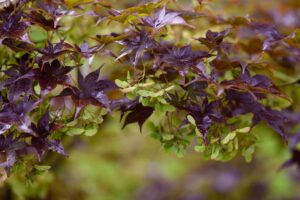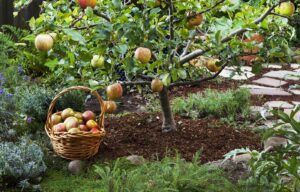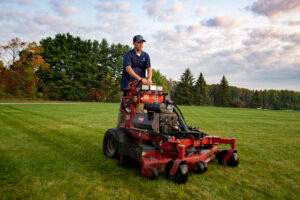Trees with Heart-Shaped Leaves: A Complete Guide
Have you ever taken a walk through your neighborhood and noticed trees with distinctly heart-shaped leaves? These charming botanical features not only add character to landscapes but often indicate specific tree species that can enhance your property’s value and biodiversity. This comprehensive guide will help you identify, grow, and appreciate these romantic-looking trees that bring natural beauty to the American landscape.
Identifying Common Trees with Heart-Shaped Leaves
Heart-shaped leaves, botanically known as “cordate” leaves, are characterized by a rounded base that indents where it meets the petiole (leaf stem), creating that classic heart silhouette. In the United States, several native and introduced species display this distinctive leaf shape.
Eastern Redbud (Cercis canadensis)
The Eastern Redbud stands as perhaps America’s most beloved heart-leafed tree. Native to the eastern United States, this small deciduous tree delivers a spectacular spring display with vibrant pink-purple flowers that emerge directly from branches before the leaves appear.
When identifying an Eastern Redbud:
- Look for glossy, heart-shaped leaves that are 3-5 inches wide
- Notice the alternating leaf arrangement along stems
- Watch for the distinctive purple-pink flowers in early spring
- Observe the flat seed pods that develop in summer and persist into winter
Eastern Redbuds thrive in USDA hardiness zones 4-9 and adapt well to various soil conditions. According to the U.S. Forest Service, these trees serve as important early-season nectar sources for native pollinators.
Northern Catalpa (Catalpa speciosa)
If you’re seeking dramatic heart-shaped leaves, look no further than the Northern Catalpa. This impressive native tree features enormous cordate leaves that can measure up to 12 inches long.
Key identification features include:
- Massive heart-shaped leaves, arranged in whorls of three
- Showy white flowers with purple and yellow markings in late spring
- Distinctive long, bean-like seed pods (up to 24 inches)
- Irregular, open canopy form
Northern Catalpas grow in USDA zones 4-8 and are remarkably adaptable to poor soils and urban conditions. Their large leaves create excellent shade, though they can be messy when dropping flowers, leaves, and seed pods.
Basswood/American Linden (Tilia americana)
This majestic native shade tree combines heart-shaped leaves with fragrant yellow flowers that perfume entire neighborhoods in early summer. American Basswood trees can reach heights of 60-80 feet with a broad, rounded crown.
Identifying characteristics:
- Asymmetrical heart-shaped leaves with serrated edges
- Distinctive clusters of small, fragrant yellow flowers
- Small, nutlike fruits attached to unique wing-like bracts
- Smooth gray bark that develops ridges with age
Basswoods prefer moist, well-drained soils in USDA zones 3-8 and provide valuable habitat for wildlife. The National Park Service notes that these trees are particularly important for honey production, with their nectar creating what many consider the finest flavored honey.
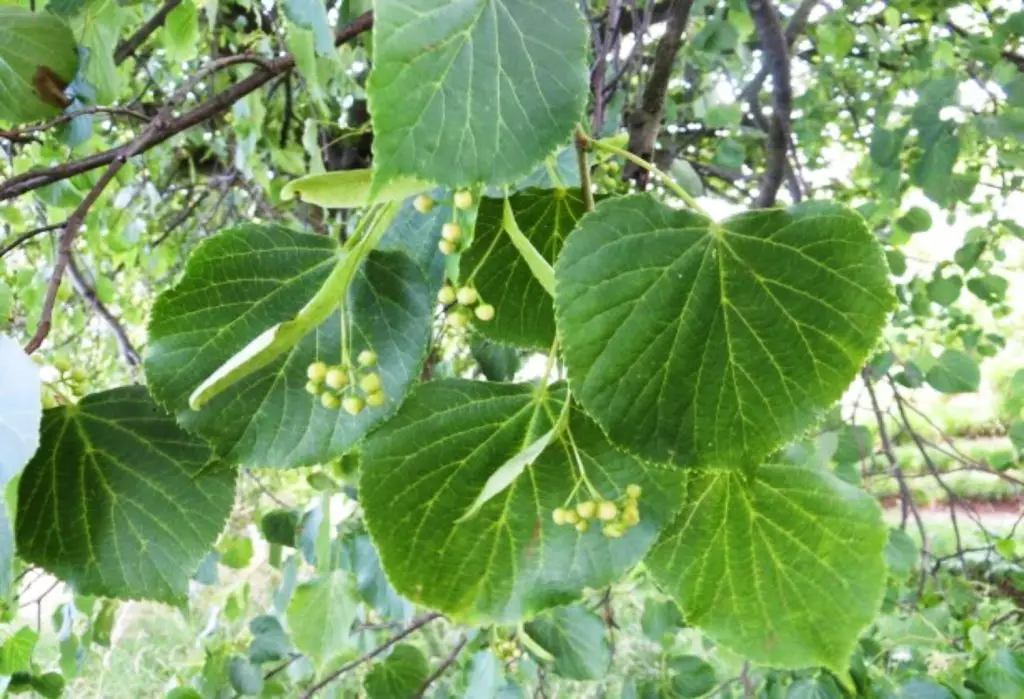
Katsura Tree (Cercidiphyllum japonicum)
While not native to North America, the Katsura tree from Japan has become a popular landscape choice in the United States. Its delicate heart-shaped leaves change color throughout the growing season.
Look for:
- Small, rounded heart-shaped leaves with scalloped edges
- Purple-red emerging foliage that turns blue-green in summer
- Spectacular yellow, apricot, and rose fall colors
- A distinctive caramel or burnt sugar scent in autumn
Katsura trees perform best in USDA zones 4-8 in moist, well-drained soils. They prefer partial shade in warmer regions.
Comparing Popular Heart-Shaped Leaf Trees
When selecting the right heart-shaped leaf tree for your landscape, consider these key characteristics:
| Tree SpeciesHeightSpreadGrowth RateFlower ColorFall ColorUSDA ZonesNotable FeaturesEastern Redbud20-30 ft25-35 ftModeratePink-PurpleYellow4-9Early spring flowers on bare branchesNorthern Catalpa40-60 ft20-40 ftFastWhiteYellow-Brown4-8Giant leaves, long seed podsAmerican Basswood60-80 ft30-50 ftModerateYellowYellow3-8Fragrant flowers, important for honeyKatsura Tree40-60 ft25-40 ftModerateInconspicuousYellow, Orange, Pink4-8Caramel scent in fallForest Pansy Redbud20-30 ft25-35 ftModeratePink-PurplePurple/Red5-9Purple-red leaves |
|---|
Growing Your Own Heart-Shaped Leaf Trees
Adding trees with heart-shaped leaves to your landscape not only increases aesthetic appeal but can also boost property values. According to research from the USDA Forest Service, healthy mature trees can increase property values by 10-20%.
Site Selection and Planting Tips
When planting heart-shaped leaf trees, proper site selection is crucial:
For Eastern Redbuds:
- Choose a location with morning sun and afternoon shade
- Plant in well-drained soil; they tolerate clay but not wet feet
- Allow 25-35 feet of spread room for mature specimens
- Consider planting near patios or windows where spring flowers can be appreciated
For Northern Catalpas:
- Select a large open area away from structures and walkways
- Ensure overhead space is free from power lines
- Provide deep, moist soil for optimal growth
- Position where falling pods won’t create maintenance issues
For American Basswood:
- Choose a large open area with full sun to partial shade
- Provide rich, moist soil for best growth
- Allow ample space (50+ feet) for mature spread
- Plant away from patios where sticky honeydew may drop
For Katsura Trees:
- Select a site with consistent moisture
- Provide afternoon shade in warmer regions
- Ensure good air circulation
- Position where autumn fragrance can be appreciated

Planting Process
Follow these steps when planting any heart-shaped leaf tree:
- Dig a hole twice as wide as the root ball but no deeper
- Remove the tree from its container and gently loosen circling roots
- Position the tree so the root flare sits slightly above ground level
- Backfill with native soil, avoiding amendments in the planting hole
- Create a 3-inch deep watering ring around the outer edge of the hole
- Apply 2-3 inches of mulch, keeping it several inches away from the trunk
- Water deeply immediately after planting
Maintenance and Care
Proper maintenance ensures your heart-shaped leaf trees remain healthy and vibrant:
Watering Requirements: During the first two years, provide regular deep watering:
- Give 10-15 gallons of water weekly during growing season
- Reduce frequency but increase volume as tree establishes
- Install soaker hoses or drip irrigation for efficient watering
- Monitor soil moisture, especially during drought periods
Fertilization Guidelines: Most heart-shaped leaf trees require minimal fertilization:
- For young trees, apply a slow-release balanced fertilizer in spring
- For established trees, fertilize only if growth seems stunted or leaves pale
- Follow soil test recommendations for specific nutrient needs
- Avoid high-nitrogen fertilizers that can promote excessive soft growth
Pruning Practices: Proper pruning helps maintain tree structure and health:
- Remove dead, damaged, or crossing branches in late winter
- For Eastern Redbuds, prune after flowering to preserve flower buds
- For Catalpas, remove suckers and watersprouts regularly
- For all species, maintain a central leader when young
- Limit pruning to no more than 25% of live growth in any year
Common Problems and Solutions
Even well-maintained heart-shaped leaf trees can encounter issues:
Pest Challenges
Catalpa Sphinx Moth: The larvae (catalpa worms) can defoliate catalpa trees in severe infestations.
- Solution: Monitor and remove egg clusters; handpick larvae for small trees; severe cases may require Bacillus thuringiensis (Bt) application.
Japanese Beetles: These pests particularly favor basswood and redbud leaves.
- Solution: Use beetle traps away from valued trees; apply neem oil for organic control; maintain tree vigor to withstand occasional damage.
Scale Insects: Common on many heart-shaped leaf trees.
- Solution: Apply horticultural oil during dormant season; introduce beneficial predators; prune heavily infested branches.
Disease Issues
Verticillium Wilt: A serious fungal disease affecting many heart-shaped leaf trees.
- Solution: No cure exists; remove infected branches; maintain proper tree health; consider resistant varieties when replanting.
Leaf Spot Diseases: Various fungal pathogens can cause leaf spots on heart-shaped leaves.
- Solution: Improve air circulation; avoid overhead watering; rake and dispose of fallen leaves; apply fungicides in severe cases.
Canker Diseases: Bacterial or fungal cankers can affect branches and trunks.
- Solution: Prune affected areas in dry weather; disinfect tools between cuts; avoid wounding trees during maintenance.
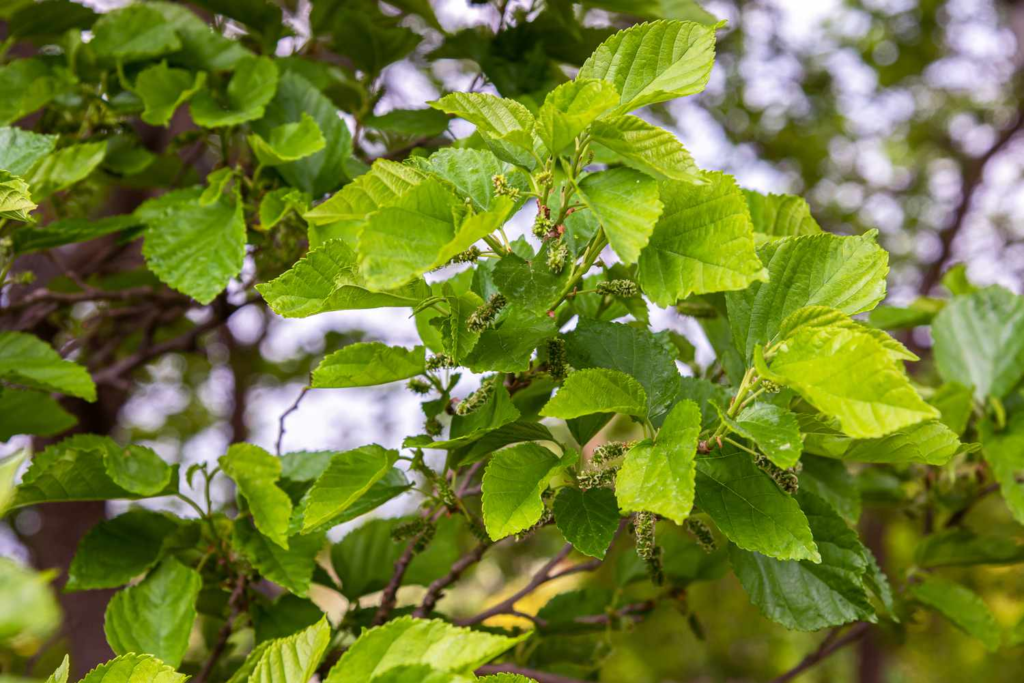
Landscape Uses for Heart-Shaped Leaf Trees
Heart-shaped leaf trees offer versatile landscaping applications:
Focal Points and Specimens
Eastern Redbuds and Forest Pansy cultivars make excellent specimen trees:
- Plant in prominent yard locations where spring flowers create visual impact
- Use as focal points in garden beds surrounded by complementary shrubs
- Position near windows or patios where seasonal changes can be appreciated
- Incorporate into woodland garden edges for naturalistic transitions
Shade and Structure
Larger species like American Basswood and Northern Catalpa provide:
- Cooling shade for outdoor living areas
- Structure and vertical elements in large landscapes
- Privacy screening when strategically placed
- Habitat value for wildlife, especially birds and pollinators
Urban Applications
Heart-shaped leaf trees can solve specific urban landscape challenges:
- Eastern Redbuds tolerate pollution and confined spaces
- Katsura trees withstand reflected heat from buildings
- Cultivars like ‘Forest Pansy’ Redbud offer compact forms for smaller yards
- All provide ecosystem services like air purification and temperature moderation
According to the EPA’s Urban Heat Island research, strategically planted trees can reduce surrounding air temperatures by up to 9°F, making heart-shaped leaf trees valuable components of climate-resilient landscapes.
Environmental Benefits
Beyond their ornamental value, trees with heart-shaped leaves contribute significant environmental benefits:
Wildlife Support
Many heart-shaped leaf trees provide crucial habitat:
- Eastern Redbud seeds feed songbirds and small mammals
- Catalpa flowers attract hummingbirds and native bees
- Basswood is among the most important honey plants in North America
- Native cultivars support specialized insect populations
Climate Resilience
Your heart-shaped leaf trees contribute to climate resilience by:
- Sequestering carbon throughout their lifetime
- Reducing stormwater runoff with expansive root systems
- Cooling surrounding areas through transpiration
- Filtering air pollutants through leaf surfaces
Biodiversity Enhancement
Introducing heart-shaped leaf trees increases landscape biodiversity:
- Creates vertical habitat structure
- Provides food sources at different seasons
- Supports soil microorganisms with leaf litter
- Offers nesting sites for birds and mammals
Conclusion
Trees with heart-shaped leaves offer a perfect combination of aesthetic charm and ecological value for American landscapes. Whether you’re drawn to the spring spectacle of Eastern Redbud, the dramatic scale of Northern Catalpa leaves, the fragrant flowers of American Basswood, or the seasonal changes of Katsura, these trees can transform your property while supporting local ecosystems.
By selecting the right species for your specific conditions and following proper planting and maintenance practices, you’ll enjoy these botanical treasures for decades to come. Consider reaching out to your local extension office for guidance on native heart-shaped leaf tree species that will thrive in your specific region.
Remember that these trees are not just beautiful additions to your landscape—they’re living legacy plants that will continue to grow and provide benefits long after planting. Their distinctive heart-shaped leaves serve as a reminder of the emotional connection many of us feel with the natural world.


